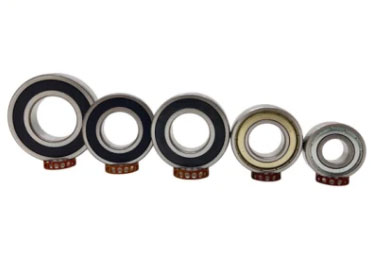Home / News / CNC Bearing Life Expectancy: Factors Affecting Longevity and Strategies for Maximizing Service Life
CNC Bearing Life Expectancy: Factors Affecting Longevity and Strategies for Maximizing Service Life
Introduction
CNC (Computer Numerical Control) machines are integral to modern manufacturing processes, providing high levels of precision, accuracy, and efficiency. Bearings are essential components in the performance and reliability of these machines, and their life expectancy directly impacts machine productivity, maintenance costs, and overall equipment effectiveness. In this article, we will discuss the factors that affect bearing life expectancy in CNC machines and explore strategies for maximizing bearing service life.

Factors Affecting Bearing Life Expectancy in CNC Machines
Load and Speed: The load and speed at which the bearing operates directly impact its life expectancy. Higher loads and speeds can increase stress on the bearing, resulting in faster wear and reduced service life.
Lubrication: Proper lubrication is essential for reducing friction, dissipating heat, and preventing the ingress of contaminants. Insufficient or improper lubrication can lead to increased wear and premature bearing failure.
Contamination: The presence of contaminants, such as dust, dirt, and metal particles, can cause abrasive wear, reducing bearing life expectancy. Proper sealing and cleanliness of the operating environment can help minimize contamination.
Installation and Alignment: Improper installation or misalignment can cause uneven load distribution and increased stress on the bearing, resulting in reduced service life.
Bearing Material: The choice of bearing material, such as bearing steel, stainless steel, or ceramic materials, can impact the bearing's wear resistance, load capacity, and overall life expectancy.
Strategies for Maximizing Bearing Life Expectancy in CNC Machines
Proper Selection: Choose the appropriate bearing type, size, and material for the specific CNC application, considering factors such as load, speed, operating environment, and required precision.
Installation and Alignment: Ensure proper bearing installation and alignment by following the manufacturer's guidelines and using specialized tools, such as bearing mounting kits, induction heaters, and alignment equipment.
Lubrication Management: Implement a lubrication management program, including the selection of suitable lubricants, the establishment of lubrication intervals, and the monitoring of lubricant condition.
Condition Monitoring: Regularly monitor bearing condition through vibration analysis, temperature monitoring, and other predictive maintenance techniques to detect early signs of wear or damage and schedule maintenance accordingly.
Cleanliness and Contamination Control: Maintain a clean operating environment, use appropriate sealing solutions, and implement contamination control measures to minimize the ingress of contaminants.
Training and Education: Provide training and education to operators and maintenance personnel on proper bearing handling, installation, lubrication, and maintenance procedures.
Continuous Improvement: Regularly review and update maintenance procedures, investigate bearing failures, and implement improvements to enhance bearing performance and extend service life.
Conclusion
Bearing life expectancy is a crucial factor in the performance and reliability of CNC machines. By understanding the factors that affect bearing life expectancy and implementing strategies to maximize service life, manufacturers can optimize machine performance, reduce maintenance costs, and enhance product quality. Investing in proper bearing selection, installation, lubrication, and maintenance is essential for maximizing the efficiency and productivity of advanced manufacturing processes, ensuring the longevity and reliability of CNC machines.
- Previous: Understanding CNC Bearing Clearance: Its Importance and Impact on Machine Performance and Reliabilit
- Next: Choosing the Right CNC Bearing Suppliers: Factors to Consider and the Importance of Quality Partners













